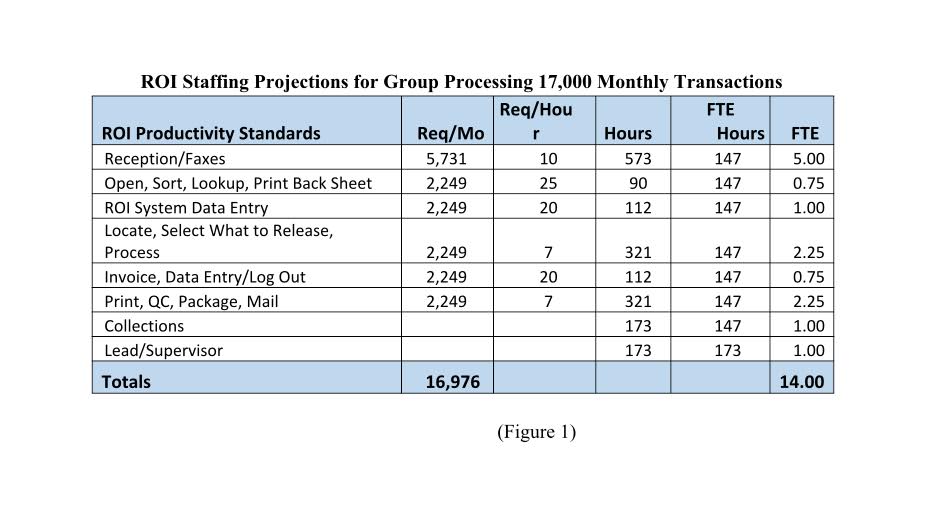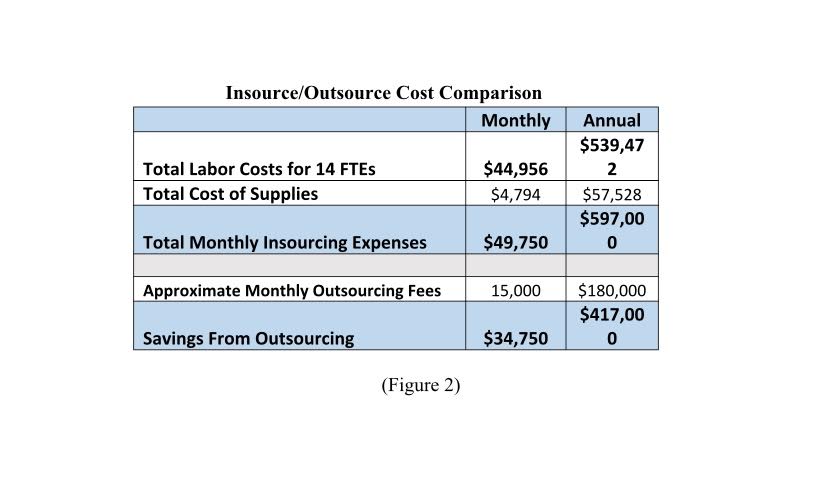Hospitals and health systems are facing a set of formidable challenges in managing release-of-information (ROI) – from keeping up with the skyrocketing volumes of record requests from payers, attorneys and auditors – to complying with complex, increasing and ever-changing federal and state regulations. In fact, the ROI process has become such a daunting and high risk endeavor that it has grown beyond the internal capabilities and risk thresholds of many hospitals and health systems.
While many institutions have already transitioned to outsourcing ROI, others want to be sure that it makes sense financially before making the move. This article will identify the hidden costs of insourcing ROI and make the business case for outsourcing ROI.
The Hidden Costs of Insourcing ROI
The costs of insourcing ROI can be thought of as falling into two main buckets: 1) the traditional costs of outsourcing and 2) the hidden costs related specifically to ROI. The first bucket includes many of the obvious components such as salaries, benefits and taxes for staff and supervisors, as well as the cost of office space, equipment and supplies.
However, the hidden costs of ROI include a range of factors that may not come to mind but should be considered in any apples-to-apples comparison. These hidden costs include:
o providing ongoing, real-time access to legal counsel to ensure record requests are fulfilled in a manner that is in compliance with federal and state regulation
o the resources needed for accounts receivables and sales tax collections and filings
o the purchase of ROI software as well as the fees for software maintenance and upgrades
o staff overtime to handle record request backlogs due to volume spikes, system downtimes, vacations or other work priorities.
o interviewing, hiring, and training new HIM staff as a result of staff attrition. As some hospitals and facilities experience high turnover, this cost could be substantial.
Healthcare executives should also consider the potential costs of a regulatory misstep as many HIM departments are overwhelmed by heavy workloads and are challenged to find the time and resources to provide staff with the requisite, ongoing training to keep pace with complex regulations. This conundrum can put hospitals at risk for costly lawsuits, financial penalties and even a PR nightmare from a potential privacy breach.
Cost of ROI Insourcing vs. Outsourcing
Keeping in mind the total costs of insourcing, now let's take a look at the business case for outsourcing by reviewing an example of an institution consisting of five healthcare facilities that processes 17,000 record request transactions a month (see figure 1). For each type of request task, we used ROI productivity standards to determine the number of requests that can be processed per hour and then calculated the total number of hours required for each task. Then applying the average available hours for a FTE (staff or supervisor), we determined the number of FTEs needed to perform each task In this example, it required 14 FTEs to complete the 17,000 monthly records.

Using average hourly rates for staff and a supervisor, total labor costs totaled approximately $45,000 per month plus an additional $4,700 a month for supplies. As a result, this institution's internal ROI costs totaled nearly $50,000 per month. When this institution transitioned to ROI outsourcing, they paid approximately $15,000 a month which generated a savings for the institution of approximately $35,000 per month and $417,000 per year (see figure 2 below).
In addition to annual costs savings, this institution will also save on the cost of legal counsel, accounts receivables and sales tax collections and filings, and ROI software and service. While outsourcing fees vary based on organizational size, complexity, geography and other factors, it typically provides a cost savings while significantly reducing compliance risks.

Why ROI Outsourcing is Cost Effective
ROI outsourcing organizations have lower operational costs because they:
• Use highly specialized, efficient ROI systems that expedite record processing
• Provide employees with on-going training on ever-changing federal and state regulations and real-time access to knowledgeable regulatory expertise
• Employ industry best practices to drive efficiencies
• Are resourced to handle volume fluctuations without incurring overtime expenses.
In today's intense regulatory and value-based environment, hospital executives should consider ROI outsourcing. The Association of Health Information Outsourcing Services (AHIOS) can provide a list of member organizations who employ industry best practices and who can provide an insourcing vs. outsourcing cost analysis to facilitate decision-making. Armed with this information, along with an analysis of the total cost of insourcing, hospitals and health systems are empowered to make the best ROI management decisions for their institutions.
The authors of this article are the following members of the Association of Health Information Outsourcing Services (AHIOS): Bill Lexa, CEO, Lexa Records, Victor Rivera, President, Integrity Document Solutions, and Carlos Rodriguez, Chief Operating Officer, Next Medical Records.
The views, opinions and positions expressed within these guest posts are those of the author alone and do not represent those of Becker's Hospital Review/Becker's Healthcare. The accuracy, completeness and validity of any statements made within this article are not guaranteed. We accept no liability for any errors, omissions or representations. The copyright of this content belongs to the author and any liability with regards to infringement of intellectual property rights remains with them.

